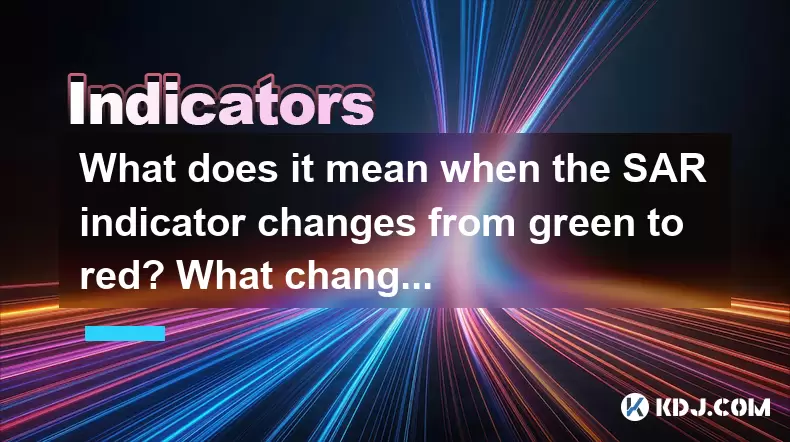-
 Bitcoin
Bitcoin $119600
0.45% -
 Ethereum
Ethereum $4671
8.16% -
 XRP
XRP $3.250
2.78% -
 Tether USDt
Tether USDt $0.9999
0.01% -
 BNB
BNB $838.0
3.17% -
 Solana
Solana $198.5
12.77% -
 USDC
USDC $0.9997
-0.01% -
 Dogecoin
Dogecoin $0.2396
6.18% -
 TRON
TRON $0.3547
2.21% -
 Cardano
Cardano $0.8583
9.20% -
 Chainlink
Chainlink $24.42
13.29% -
 Hyperliquid
Hyperliquid $44.08
1.42% -
 Stellar
Stellar $0.4492
2.37% -
 Sui
Sui $3.915
6.09% -
 Bitcoin Cash
Bitcoin Cash $612.9
3.02% -
 Hedera
Hedera $0.2627
5.34% -
 Ethena USDe
Ethena USDe $1.000
-0.03% -
 Avalanche
Avalanche $24.94
7.83% -
 Litecoin
Litecoin $132.6
10.48% -
 Toncoin
Toncoin $3.439
1.39% -
 UNUS SED LEO
UNUS SED LEO $9.212
2.34% -
 Shiba Inu
Shiba Inu $0.00001371
4.89% -
 Uniswap
Uniswap $11.54
1.13% -
 Polkadot
Polkadot $4.211
7.67% -
 Dai
Dai $0.9998
-0.03% -
 Cronos
Cronos $0.1649
-1.62% -
 Ethena
Ethena $0.7975
-1.46% -
 Pepe
Pepe $0.00001235
9.15% -
 Bitget Token
Bitget Token $4.445
0.46% -
 Aave
Aave $323.7
8.18%
What does it mean when the SAR indicator changes from green to red? What changes does it indicate when it changes from red to green?
The Parabolic SAR indicator's shift from green to red signals a bearish trend, prompting traders to exit long positions and consider short selling.
Jun 04, 2025 at 12:56 pm

The Parabolic SAR (Stop and Reverse) indicator is a popular technical analysis tool used by traders in the cryptocurrency market to determine the direction of an asset's momentum and potential reversals. Understanding the changes in the SAR indicator, particularly when it shifts from green to red or from red to green, is crucial for making informed trading decisions. This article will delve into the meanings behind these color changes and the implications they have for trading strategies.
Understanding the Parabolic SAR Indicator
The Parabolic SAR indicator is designed to provide entry and exit points in the market. It appears on a chart as a series of dots, either above or below the price action. When the dots are below the price, it suggests an uptrend, and when the dots are above the price, it indicates a downtrend. The color of the dots, typically green for uptrends and red for downtrends, helps traders quickly identify the current market direction.
When the SAR Indicator Changes from Green to Red
A change in the Parabolic SAR indicator from green to red signifies a shift in market momentum from an uptrend to a downtrend. This transition is critical for traders as it suggests that the bullish momentum is waning, and bearish forces are beginning to take over.
- Identifying the Change: When you observe the SAR dots moving from below the price (green) to above the price (red), it is a clear signal that the market is transitioning from an uptrend to a downtrend.
- Trading Implications: Traders who have been holding long positions might consider this a signal to exit their positions to lock in profits. Conversely, it could be an opportunity for short sellers to enter the market.
- Confirmation: It is advisable to use other technical indicators, such as the Relative Strength Index (RSI) or Moving Averages, to confirm the bearish trend before making trading decisions.
When the SAR Indicator Changes from Red to Green
Conversely, when the Parabolic SAR indicator shifts from red to green, it indicates a change from a downtrend to an uptrend. This signal suggests that the bearish momentum is diminishing, and bullish forces are starting to dominate the market.
- Identifying the Change: The SAR dots will transition from being above the price (red) to below the price (green), signaling a shift to an uptrend.
- Trading Implications: This change is an opportunity for traders to enter long positions or to close out short positions. It suggests that the market is likely to continue rising.
- Confirmation: As with any trading signal, it is beneficial to confirm this shift using other indicators, such as the Moving Average Convergence Divergence (MACD) or the Stochastic Oscillator, to ensure the uptrend is valid.
Practical Application of the SAR Indicator
To effectively use the Parabolic SAR indicator in your trading strategy, consider the following steps:
- Monitor the Dots: Keep a close eye on the position of the SAR dots relative to the price action. A change in their position from above to below or vice versa can signal a potential trend reversal.
- Combine with Other Indicators: Use the SAR indicator in conjunction with other technical tools to increase the reliability of your trading signals. For instance, if the SAR indicates an uptrend and the RSI is also showing overbought conditions, it might reinforce the bullish signal.
- Set Stop-Loss Orders: Based on the SAR indicator's signals, set stop-loss orders to manage risk. For example, if the SAR shifts from green to red, you might place a stop-loss order just above the latest high to protect against further downturns.
Example of Using the SAR Indicator in a Trading Scenario
Imagine you are trading Bitcoin (BTC) and you notice the SAR dots have been green and positioned below the price for the past few days, indicating a strong uptrend. Suddenly, the dots shift to red and appear above the price. This change signals that the uptrend might be over, and a downtrend could be starting.
- Action: You decide to sell your long position in BTC to lock in profits.
- Confirmation: You check the RSI and see that it has moved into overbought territory, further confirming the bearish signal.
- Result: After exiting your position, the price of BTC indeed starts to decline, validating your decision to sell based on the SAR indicator's change from green to red.
Limitations and Considerations
While the Parabolic SAR indicator is a powerful tool, it is not without its limitations. It can sometimes produce false signals, especially in sideways or choppy markets. Therefore, it is crucial to:
- Use in Trending Markets: The SAR indicator works best in markets that have a clear trend. In ranging markets, it may generate false signals that can lead to losses.
- Combine with Other Tools: Always use the SAR indicator in conjunction with other technical analysis tools to validate its signals.
- Adjust Sensitivity: The sensitivity of the SAR indicator can be adjusted by changing the acceleration factor. A higher acceleration factor will make the indicator more responsive but may also increase the number of false signals.
Frequently Asked Questions
Q: Can the Parabolic SAR indicator be used for all cryptocurrencies?
A: Yes, the Parabolic SAR indicator can be applied to any cryptocurrency that is traded on an exchange. However, its effectiveness may vary depending on the volatility and liquidity of the specific cryptocurrency.
Q: How often should I check the Parabolic SAR indicator?
A: The frequency of checking the SAR indicator depends on your trading style. Day traders might check it multiple times throughout the day, while swing traders might review it on a daily or weekly basis.
Q: Is the Parabolic SAR indicator suitable for beginners?
A: While the Parabolic SAR indicator is relatively easy to understand, beginners should use it in conjunction with other tools and consider practicing with a demo account before applying it in live trading.
Q: Can the Parabolic SAR indicator be used for long-term investments?
A: The Parabolic SAR indicator is primarily designed for short-term trading and trend identification. For long-term investments, it is better to use fundamental analysis and other long-term indicators in addition to the SAR.
Disclaimer:info@kdj.com
The information provided is not trading advice. kdj.com does not assume any responsibility for any investments made based on the information provided in this article. Cryptocurrencies are highly volatile and it is highly recommended that you invest with caution after thorough research!
If you believe that the content used on this website infringes your copyright, please contact us immediately (info@kdj.com) and we will delete it promptly.
- Meme Coins: Chasing the 2025 Surge – Which Will Moonshot?
- 2025-08-13 10:25:23
- Bitcoin's Wild Ride: Rally, Pullback, and What's Next
- 2025-08-13 10:25:23
- Bitcoin, Bitmax, and Institutional Demand: A New Era of Crypto Investment
- 2025-08-13 10:45:12
- Solana, ROAM, and Airdrops: What's the Buzz in 2025?
- 2025-08-13 11:35:13
- Riding the Crypto Wave: NFTs, DeFi, and the Market's $4.2T High
- 2025-08-13 11:35:13
- Cold Wallet: Cashback, Crypto, and Cutting Gas Fees Like a Boss
- 2025-08-13 11:45:17
Related knowledge

What does it mean when the +DI and -DI cross frequently in the DMI indicator but the ADX is flattening?
Aug 11,2025 at 03:15am
Understanding the DMI Indicator ComponentsThe Directional Movement Index (DMI) is a technical analysis tool composed of three lines: the +DI (Positive...

What does the sudden appearance of a "dark cloud cover" candlestick pattern during an uptrend indicate?
Aug 13,2025 at 11:35am
Understanding the 'Dark Cloud Cover' Candlestick PatternThe dark cloud cover is a bearish reversal pattern in technical analysis that typically appear...

What does it mean when the moving average, MACD, and RSI all send buy signals simultaneously?
Aug 11,2025 at 01:42pm
Understanding the Convergence of Technical IndicatorsWhen the moving average, MACD, and RSI all generate buy signals at the same time, traders interpr...

What does it mean when both the KDJ indicator and the RSI show overbought signals simultaneously?
Aug 13,2025 at 11:35am
Understanding the KDJ Indicator in Cryptocurrency TradingThe KDJ indicator is a momentum oscillator derived from the Stochastic Oscillator, widely use...

What does it mean when the price is trading above the SAR indicator but the red dots are densely packed?
Aug 09,2025 at 11:49pm
Understanding the SAR Indicator and Its Visual SignalsThe SAR (Parabolic Stop and Reverse) indicator is a technical analysis tool used primarily to de...

What does it mean when the candlestick chart forms a "Morning Star" but trading volume is sluggish?
Aug 12,2025 at 06:28pm
Understanding the Morning Star Candlestick PatternThe Morning Star is a three-candle bullish reversal pattern commonly observed in cryptocurrency pric...

What does it mean when the +DI and -DI cross frequently in the DMI indicator but the ADX is flattening?
Aug 11,2025 at 03:15am
Understanding the DMI Indicator ComponentsThe Directional Movement Index (DMI) is a technical analysis tool composed of three lines: the +DI (Positive...

What does the sudden appearance of a "dark cloud cover" candlestick pattern during an uptrend indicate?
Aug 13,2025 at 11:35am
Understanding the 'Dark Cloud Cover' Candlestick PatternThe dark cloud cover is a bearish reversal pattern in technical analysis that typically appear...

What does it mean when the moving average, MACD, and RSI all send buy signals simultaneously?
Aug 11,2025 at 01:42pm
Understanding the Convergence of Technical IndicatorsWhen the moving average, MACD, and RSI all generate buy signals at the same time, traders interpr...

What does it mean when both the KDJ indicator and the RSI show overbought signals simultaneously?
Aug 13,2025 at 11:35am
Understanding the KDJ Indicator in Cryptocurrency TradingThe KDJ indicator is a momentum oscillator derived from the Stochastic Oscillator, widely use...

What does it mean when the price is trading above the SAR indicator but the red dots are densely packed?
Aug 09,2025 at 11:49pm
Understanding the SAR Indicator and Its Visual SignalsThe SAR (Parabolic Stop and Reverse) indicator is a technical analysis tool used primarily to de...

What does it mean when the candlestick chart forms a "Morning Star" but trading volume is sluggish?
Aug 12,2025 at 06:28pm
Understanding the Morning Star Candlestick PatternThe Morning Star is a three-candle bullish reversal pattern commonly observed in cryptocurrency pric...
See all articles

























































































